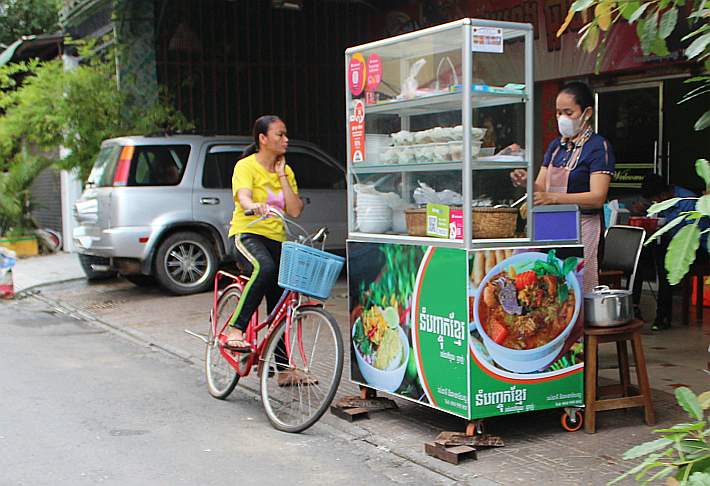
Eating on the road…

Charlie Dittmeier's Home Page

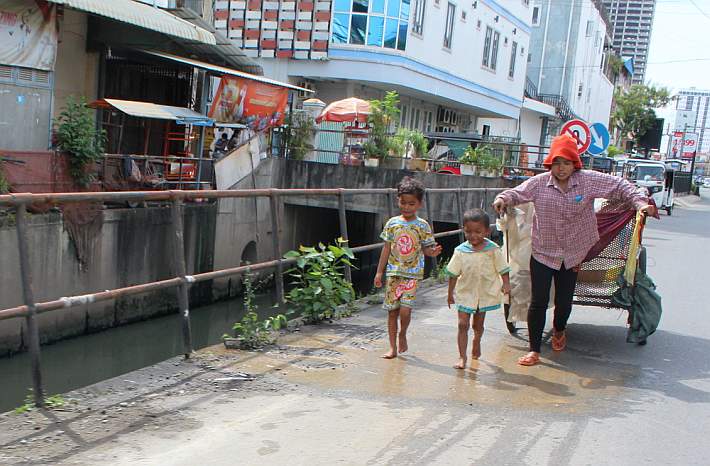
For this mother, every day is “Take your children to work day.”
This is not an uncommon sight in Phnom Penh, a mother–or father–taking the children to work with them. It is more common now because the schools have been closed and the parents have no alternative except to take the children with them.
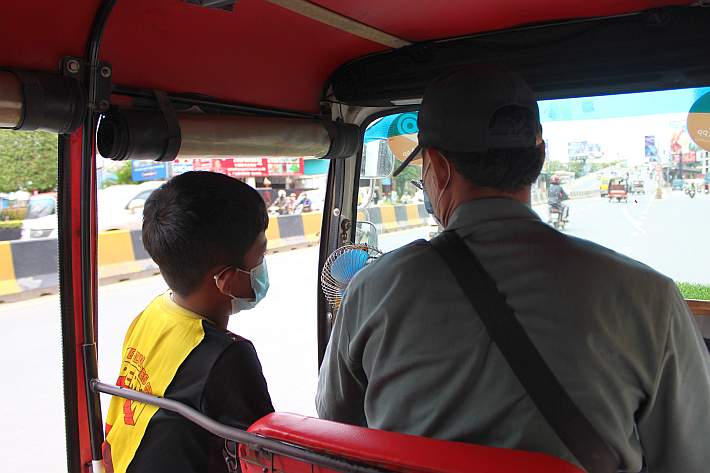
Here a father takes his son along for the ride as he picks up people in his tuk-tuk all day long. This son and father really seemed to enjoy being together from the conversations they were having.

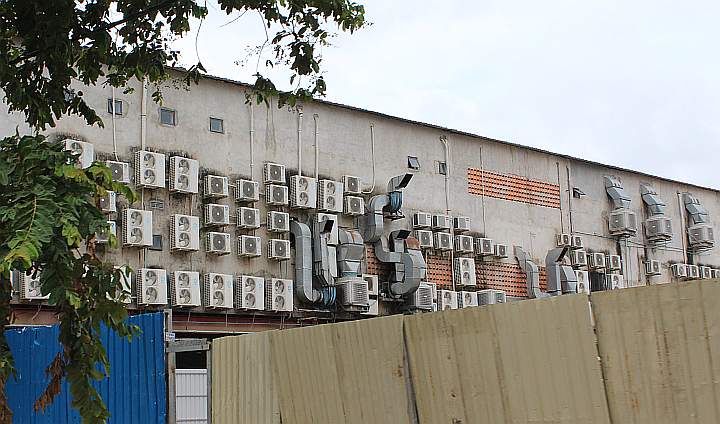
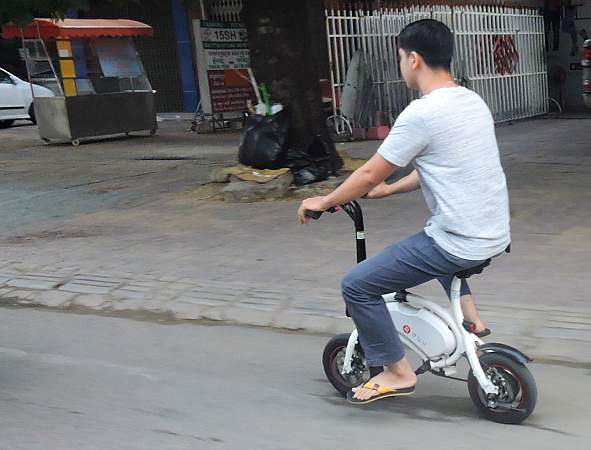
Electric vehicles are becoming more popular around the world but I don’t know if this one is going to attract much attention. It is one of the smallest electric bikes I have seen in Phnom Penh and doesn’t look really comfortable. This is the only one of this model I have seen so may others share my lack of enthusiasm for it.
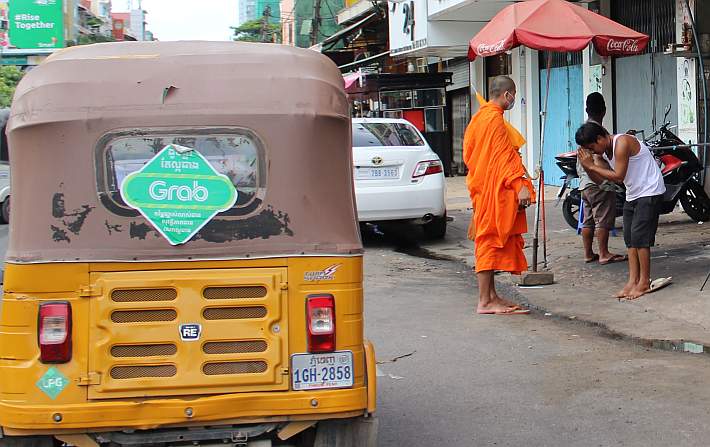
When Phnom Penh was locked down and no one could leave his/her house, the monks couldn’t leave their pagodas to make their daily rounds begging food and money for the poor and themselves. One sign of a return to something like a previous normal is that now the monks are back on the street every morning.
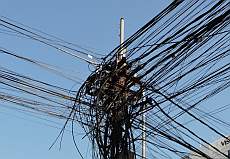
One of the first things visitors to Phnom Penh notice are the wires strung along every street. A LOT of wires. Click here to see what the visitors see.
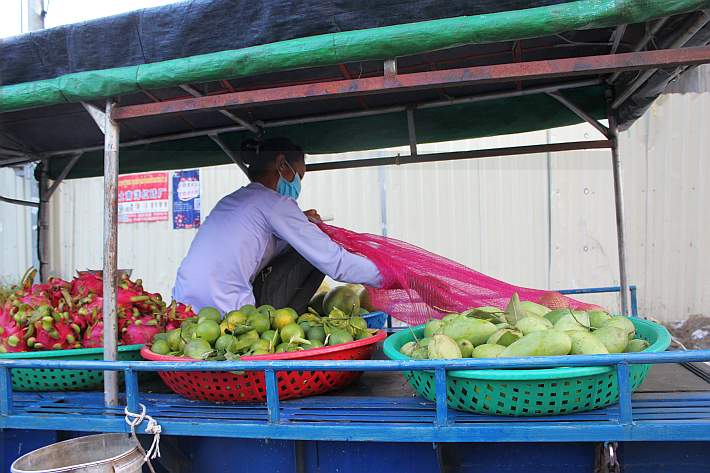
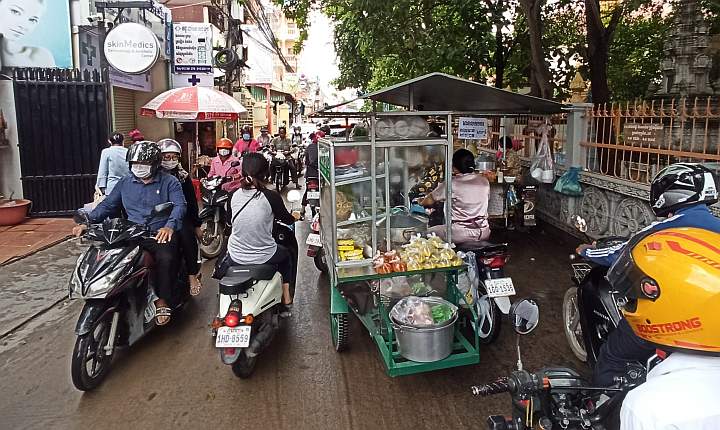
The woman in the food cart in the foreground is waiting to go around the food cart of the woman with stuff hanging on the fence. The cart in the background is blocking one lane, forcing all the traffic to squeeze through the other side. It doesn’t make any sense but that doesn’t bother Cambodian drivers. That’s the way life is. You just sit there and lurch forward an inch at a time. There is no discipline, no regulation, no enforcement–and everyone accepts that. Basically it’s only the foreigners that are bothered.
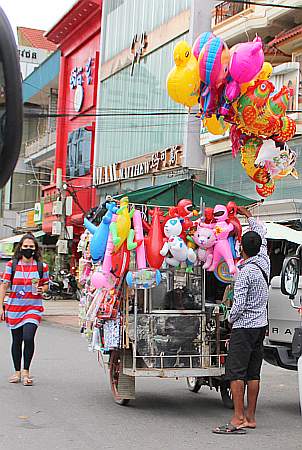
She doesn’t look like she’s in the mood for balloons today….